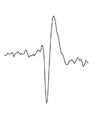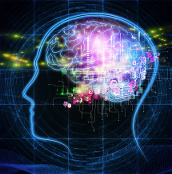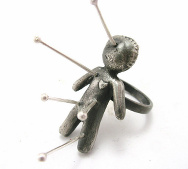 The death of Phillip Seymour Hoffman has sparked some strong and seemingly contradictory responses. What these reactions show is that many people find it hard to think of addiction as being anything except either a choice or a loss of free will.
The death of Phillip Seymour Hoffman has sparked some strong and seemingly contradictory responses. What these reactions show is that many people find it hard to think of addiction as being anything except either a choice or a loss of free will.
The fact that addiction could involve an active choice to take drugs but still be utterly irresistible seems difficult for most people to fathom.
Let’s take some reactions from the media. Over at Time, David Sheff wrote that “it wasn’t Hoffman’s fault that he relapsed. It was the fault of a disease”. On the other hand, at Deadspin, Tim Grierson wrote that the drug taking was “thoughtless and irresponsible, leaving behind three children and a partner”.
So does addiction trap people within its claws or do drug users die from their own actions? It’s worth noting that this is a politicised debate. Those who favour a focus on social factors prefer prefer the ‘trap’ idea, those who prefer to emphasise individual responsibility like the ‘your own actions’ approach.
Those who want to tread the middle ground or aim to be diplomatic suggest it’s ‘half and half’ – but actually it’s both at the same time, and these are not, as most people believe, contradictory explanations.
To start, it’s worth thinking about how heroin has its effect at all. Heroin is metabolised to morphine which then binds to opioid receptors in the brain. It seems to be the effects in the nucleus accumbens and limbic system which are associated with the pleasure and reward associated with the drug.
But in terms of motivating actions, it is a remarkably non-specific drug and it doesn’t directly cause specific behaviours.
In fact, there is no drug that makes you hassle people in Soho for a score. There’s no drug that manipulates the neural pathways to make you take the last 40 quid out of your account to buy a bag of gear. No chemical exists that compels your hands to prepare a needle and shoot up.
You are not forced to inject heroin by your brain or by the drug. You do not become an H-zombie or a mindless smack-taking robot. You remain in control of your actions.
But that does not mean that it’s a simple ‘choice’ to do something different, as if it was like choosing one brand of soft drink over another, or like deciding between going to the cinema or staying at home.
Addiction has a massive effect on people’s choices but not so much by altering the control of actions but by changing the value and consequences of those actions.
If that’s not clear, try thinking of it like this. You probably have full mechanical control over your speech: you can talk when you want and you can stay silent when you want. Most people would say you have free will to speak or to not speak.
But try not speaking for a month and see what the consequences are. Strained relationship? Lost job maybe? Friends who ditch you? You are free to choose your actions but you are not free to choose your outcomes.
For heroin addicts, the situation is similar. As well as the pleasurable effects of taking it, not taking heroin has strong, negative and painful effects.
This is usually thought of as the effects of physical withdrawal but these are not the whole story. These are certainly important, but withdrawing from junk is like suffering a bad case of flu. Hardly something that would prevent most people from saving their lives from falling apart.
For many addicts, the physical withdrawal is painful, but it’s the emotional effects of not taking drugs that are worse.
Most smack addicts have a frightening pre-drug history of trauma, anxiety and mood disorders. Drugs can be a way of coping with those emotional problems in the short-term.
Unfortunately, in the longer-term, persistent drug use maintains the conditions that keep the problems going. Even for those few that don’t have a difficult past or unstable emotions, life quickly become difficult after regular heroin use sets in.
If you can stay high, you’ll be less affected by the consequences of both long-standing problems and your chaotic lifestyle. If you stop, you feel the full massive force of that emotional distress.
It’s vicious circle that is often set in motion by past trauma but requires a meeting with a drug and the right social circumstances. Just taking the drug until you develop tolerance and withdrawal is unlikely to addict most people.
For example, a Vietnam War study found that just under half of soldiers reported trying heroin, 1 in 5 developed full blown dependency while in Vietnam but only about 5-10% of the dependent soldiers continued using when they arrived home. Most said they gave up without any help and only a small minority had ongoing addiction problems.
In fact, some of you reading this may have been addicted to heroin and not known it. Heroin, under its medical name diamorphine, is commonly used as a painkiller after major surgery. It’s not uncommon that patients develop tolerance and go into withdrawal after they leave hospital but just put it down to ‘feeling poorly’ or ‘recovering’.
But for persistent addicts, the ‘short-term solution that maintains the long-term problem’ cycle is not the whole story and it’s important to remember the neurological effects of the drug and how it interacts with, and changes, the brain.
Addiction is associated with difficulties in resisting cravings and making flexible decisions. This is likely to be caused by a combination of genetics, earlier experience and the ongoing impact of the drug and the drug-focused lifestyle – all of which affect brain function.
A recently popular approach is the ‘disease model’ of addiction which says that the brains of those who become addicted are more susceptible to compulsive drug use because of genetic susceptibility and / or brain changes due to early experience that ‘prime’ the brain for addiction.
It’s probably true to say that the extreme version of the ‘disease model’ – which says addiction is entirely explained by these changes and is best characterised as a ‘brain disease’ – is an exaggeration of what we know about the neuroscience of addiction, but this is not to say that neuroscience is not important.
But either way, there is no clear relationship between an aspect of behaviour being best explained in neurobiological terms and not having any control over that behaviour. For example, most genuine addicts usually give up, on their own, without any assistance and don’t relapse. They still have brains, of course.
Unfortunately though, the ‘disease model’ approach is often used precisely because some think it implies addicts have less control, possibly because they feel (probably wrongly) that it is less ‘stigmatising’ to think of heroin users in this way.
Instead, we know that self-efficacy is one of the best predictors of recovery, so denying people’s role in their own decisions just undermines one of their most important tools for recovery – alongside medication, social support and other forms of therapy.
So to say an addict has ‘no choice’ over their actions is just to misunderstand addiction but to pretend these choices are like any others just misses the fact that they can sometimes be impossibly hard decisions.
Unfortunately though, people find it hard to separate any admission of addicts being able to choose their actions from blame and moral accusation.
Blaming someone for their addiction is like shaming someone for being wounded by an abusive partner. Whatever the circumstances that caused the problem, they deserve respect and treatment, and working with them to help them regain control of their circumstances and promote their own autonomy is an important and valuable way forward.

 Biomedical charity The Wellcome Trust have launched a new online science magazine called
Biomedical charity The Wellcome Trust have launched a new online science magazine called 






